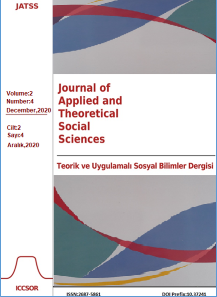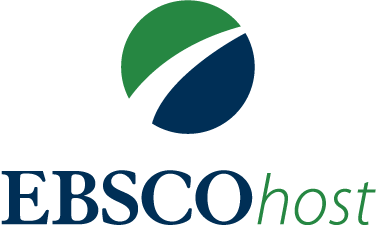BEEPS’ten Yolsuzluk Modellerini Tahmin Etmek Üzere MLT Kullanımı
Özet
Makale, kümeleme yoluyla yolsuzluğu tahmin etmek için makine öğrenimi teknolojilerini (MLT) kullanma fırsatlarını anlatmaktadır. Makalede, Avrupa İmar ve Kalkınma Bankasının 2014 yılına ait Gelişmiş İş Ortamı ve İşletme Performansı Araştırması (BEEPS)verileri kullanıldı. Avrupa İmar ve Kalkınma Bankası için Nielsen gibi saygın kurumlar tarafından üretilen 1672 değişken ve 59619 gözlemden faydalanıldı. MLT ile farklı göstergelerin analizi, ülkeleri potansiyel yolsuzluk modellerine göre kümelememize olanak tanımaktadır. Bu yöntemin klasik alan araştırması yaklaşımının gözlem eksikliklerinin üstesinden gelebileceğini ifade ettik çünkü bu yöntemle verilerinde bazı çarpıklıklar veya yetersizlikler bulunan ülkeleri de tahmin edebilmemiz mümkün hale geldi. (örneğin, firmaların bazı nedenlerden dolayı yolsuzluk hakkında yalan söylemek isteyebileceği zamanlarda). Bu yöntem bize gerçek yolsuzluk alanını analiz etmek için kullanılabilecek ek bir ölçüm sağlamaktadır. Ulaştığımız sonuçlar, farklı ülkelerdeki yolsuzluk modellerini analiz etmek için firmalar, bilim adamları ve politika yapıcılar için yararlı olabilir.
##plugins.generic.paperbuzz.metrics##
Referanslar
Babecký, Jan, and Nauro F. Campos (2011), Does Reform Work? An Econometric Survey of the Reform-Growth Puzzle. Journal of Comparative Economics, doi:10.1016/j.jce.2010.11.001. DOI: https://doi.org/10.1016/j.jce.2010.11.001
Babecky, Jan, and Tomas Havranek (2014), Structural Reforms and Growth in Transition. Economics of Transition, doi:10.1111/ecot.12029. DOI: https://doi.org/10.1111/ecot.12029
Čábelková, Inna, and Jan Hanousek (2004). The Power of Negative Thinking: Corruption, Perception and Willingness to Bribe in Ukraine. Applied Economics, 2004, doi:10.1080/00036840410001674303. DOI: https://doi.org/10.1080/00036840410001674303
DBnomics Official Site. Statistical Databases of the population and GDP. Retrieved from URL: https://db.nomics.world/ (date of access: 22.12.2019)
Eurpoean Bank for Reconstruction and Development (2014), Business Environment and Enterprise Performance Survey (BEEPS) [Dataset V].Retrieved from URL: https://www.ebrd.com/ (date of access: 22.12.2019)
Hanousek, Jan, and Anna Kochanova (2016). Bribery Environments and Firm Performance: Evidence from CEE Countries. European Journal of Political Economy, 2016, doi:10.1016/j.ejpoleco.2016.02.002. DOI: https://doi.org/10.1016/j.ejpoleco.2016.02.002
Jain, Arvind K. (2001), Corruption: A Review., Journal of Economic Surveys, doi:10.1111/1467-6419.00133. DOI: https://doi.org/10.1111/1467-6419.00133
Катц, М. (2020). Последствия коррупции: почему это касается каждого retrieved from: https://youtu.be/uyiudptWAAY (date of access: 2020/12/22)
Kaufmann, Daniel (1997), Corruption: The Facts. Foreign Policy, doi:10.2307/1149337. DOI: https://doi.org/10.2307/1149337
Kaufmann, Daniel, and Pedro C. Vicente (2011), Legal Corruption. Economics and Politics, doi:10.1111/j.1468-0343.2010.00377.x. DOI: https://doi.org/10.1111/j.1468-0343.2010.00377.x
Lindgreen, A., & Lindgreen, A. (2004). Corruption and unethical behavior: report on a set of Danish guidelines. Journal of Business Ethics. https://doi.org/10.1023/B DOI: https://doi.org/10.1023/B:BUSI.0000032388.68389.60
Mauro, Paolo (1995), Corruption and Growth. Quarterly Journal of Economics, doi:10.2307/2946696. DOI: https://doi.org/10.2307/2946696
Méon, Pierre Guillaume, and Laurent Weill (2010), Is Corruption an Efficient Grease? World Development, doi:10.1016/j.worlddev.2009.06.004. DOI: https://doi.org/10.1016/j.worlddev.2009.06.004
Méon, Pierre Guillaume, and Khalid Sekkat (2005). Does Corruption Grease or Sand the Wheels of Growth? Public Choice, doi:10.1007/s11127-005-3988-0. DOI: https://doi.org/10.1007/s11127-005-3988-0
Russian Governmental Statistical Comittee Official Site. Statistical Database of the Russian Federation. Retrieved from URL: https://www.gks.ru/ (date of access: 22.12.2019)
Sallaberry, Jonatas Dutra, et al. (2020) Measurement of Damage from Corruption in Brazil. Journal of Financial Crime, doi:10.1108/JFC-04-2020-0057. DOI: https://doi.org/10.1108/JFC-04-2020-0057
Shemetev, Alexander (2010), Complex Financial Analysis and Bankruptcy Prognosis and Also Financial Management-Marketing Self-Taught Book. Book (in Russian). 1st ed., Polygraphist, https://books.google.cz/books?id=dq0sUIpiGuAC&hl=ru&source=gbs_similarbooks. (date of access: 29.12.2020)
Shemetev, Alexander (2012). Complex Financial Analysis and Bankruptcy Prognosis and Also Financial Management-Marketing Manual for Self-Tuition Book. 1st ed., Zodchy, https://books.google.cz/books/about/Complex_financial_analysis_and_bankruptc.html?id=iViOsALV23QC&redir_esc=y. (date of access: 29.12.2020)
Shemetev, Alexander (2020). R Package alexandershemetev. GitHub Repository, https://github.com/Alexandershemetev/alexandershemetev (date of access: 29.12.2020)
Silver, Carole Kupferman, and Ayn Rand (1978), Atlas Shrugged. The English Journal, doi:10.2307/814754. DOI: https://doi.org/10.2307/814754
Slobodyan, Sergey, and Raf Wouters (2012), Learning in a Medium-Scale DSGE Model with Expectations Based on Small Forecasting Models. American Economic Journal: Macroeconomics, doi:10.1257/mac.4.2.65. DOI: https://doi.org/10.1257/mac.4.2.65
Smith, Adam (1776), An Inquiry into the Wealth of Nations, Strahan and Cadell, London, 1776.
Thompson, Dennis F. (2018), Theories of Institutional Corruption. Annual Review of Political Science, 2018, doi:10.1146/annurev-polisci-120117-110316. DOI: https://doi.org/10.1146/annurev-polisci-120117-110316
World Bank (1997), “Helping Countries Combat Corruption: The Role of the World Bank.” Poverty Reduction and Economic Management.






















